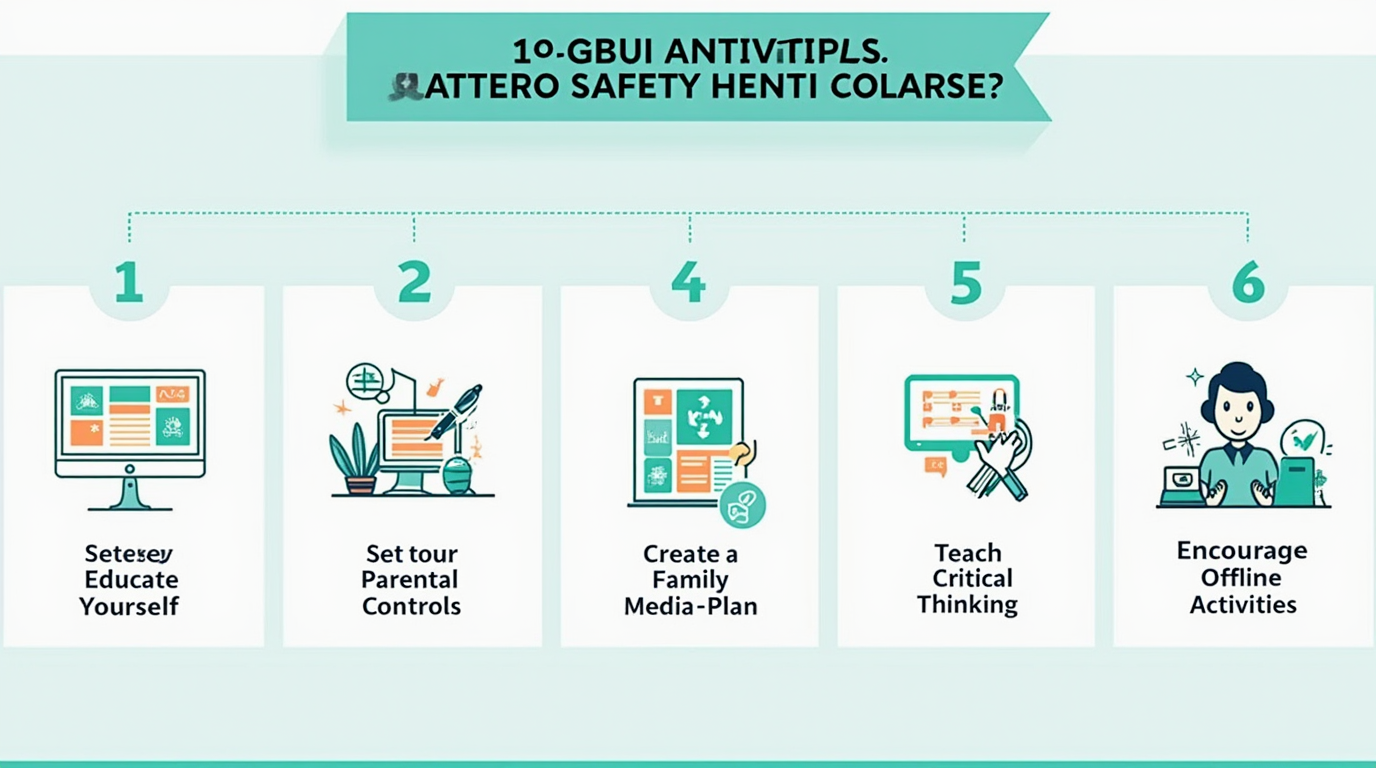How to Protect Your Child from Online Dangers in 2025: A Guide for Digital Parenting
Engaging Introduction: Is the Internet Safe for Kids?
Have you ever wondered if the internet is as safe for your child as it seems? In today’s world, where screens are everywhere and kids can access the web with just a few taps, it’s easy to feel overwhelmed. Did you know that by 2025, nearly every child will have some form of online presence? While the internet offers endless opportunities for learning and fun, it also comes with risks like cyberbullying, inappropriate content, and even strangers trying to connect with them. So, how do you keep your little one safe while letting them enjoy all the good things technology has to offer? That’s what we’re here to explore together!
In this guide, we’ll dive into the world of Digital Parenting a modern way of keeping your child protected online without stifling their curiosity. By the end, you’ll feel confident and equipped to navigate the digital landscape alongside your child.
Overview: Why This Topic Matters
The internet isn’t going anywhere, and neither is its influence on our children. As parents, it’s our job to make sure they grow up healthy, happy, and safe not just offline but online too. With advancements in technology happening faster than ever before, understanding how to protect your child becomes more important each year.
This article will teach you:
- The key dangers lurking online and how to spot them.
- Practical steps to create a safer digital environment for your family.
- Creative ways to engage with your child about internet safety.
- Expert advice on setting boundaries that work for everyone.
By the time you finish reading, you’ll be ready to tackle any challenge the digital world throws at you and maybe even enjoy it along the way!
Key Elements of Digital Parenting
Before we jump into the nitty-gritty, let’s break down the most critical parts of protecting your child online:
1. Understanding Online Risks
- Cyberbullying : Mean messages, teasing, or exclusion online.
- Inappropriate Content : Videos, images, or websites that aren’t suitable for kids.
- Stranger Danger : People pretending to be someone else to gain trust.
- Overuse of Screens : Too much screen time affecting sleep, focus, and mood.
2. Setting Boundaries Early
It’s easier to set rules when your child is young. For example:
- Decide which apps and games are okay to use.
- Set limits on daily screen time.
- Discuss why certain websites or platforms might not be safe.
3. Building Trust Through Communication
Open conversations help your child feel comfortable coming to you if something feels wrong. Ask questions like:
- “What did you learn online today?”
- “Has anyone ever said something mean to you online?”
4. Using Technology Wisely
There are tools designed specifically to help parents monitor and manage their child’s online activity. We’ll talk more about these later!
Step-by-Step Guide to Protecting Your Child Online
Now that you know the basics, here’s a step-by-step plan to get started:
Step 1: Educate Yourself First
- Learn about popular apps, games, and social media platforms your child uses.
- Stay updated on trends and potential threats (e.g., TikTok challenges or phishing scams).
Step 2: Set Up Parental Controls
Most devices come with built-in parental controls. Here’s how to use them:
- iPhone/iPad : Go to Settings > Screen Time > Content & Privacy Restrictions.
- Android : Use Google Family Link to block apps, limit screen time, and track location.
- Computers : Install software like Net Nanny or Qustodio to filter content and monitor activity.
Step 3: Create a Family Media Plan
Work together to establish guidelines for using technology. Consider including:
- Specific times when screens are allowed (e.g., after homework).
- Places where screens aren’t welcome (like dinner tables or bedrooms).
- Consequences for breaking the rules.
Step 4: Teach Critical Thinking Skills
Help your child recognize red flags, such as:
- Requests for personal information (name, address, school).
- Offers that seem too good to be true (free gifts or prizes).
- Messages from people they don’t know.
Step 5: Encourage Offline Activities
Balance screen time with outdoor play, reading, or creative hobbies. Suggest activities like board games, art projects, or family walks to keep your child engaged away from screens.
Implementation & Best Practices
Here’s how to put everything into action effectively:
Start Small
Begin with one rule or tool, like introducing a bedtime routine without screens. Once your child adjusts, add another layer of protection.
Make It Fun
Turn learning about internet safety into a game! For example, quiz your child on identifying fake profiles or spotting unsafe links.
Be Consistent
Stick to the rules you’ve created. If you allow exceptions too often, your child may become confused or push back harder.
Model Good Behavior
Children mimic what they see. Show them how to use technology responsibly by limiting your own screen time during family moments.
Additional Tips & Tricks
Looking for even more ways to safeguard your child? Try these expert-recommended strategies:
- Use Strong Passwords : Teach your child to create unique passwords for each account. Avoid using names, birthdays, or simple words.
- Check Privacy Settings : Regularly review privacy settings on social media accounts to ensure only trusted friends can see posts.
- Monitor Social Media Interactions : Keep an eye on who your child interacts with online. Remind them never to share private details with strangers.
- Encourage Reporting : Let your child know it’s okay to report anything suspicious or uncomfortable to you or a teacher.
Customization & Variations
Every family is different, so feel free to tweak these ideas to fit your lifestyle:
For Younger Kids
Focus on supervised browsing and educational apps. Use tools like YouTube Kids to filter age-appropriate videos.
For Tweens & Teens
Gradually give more independence while maintaining open communication. Discuss peer pressure and the importance of standing up for themselves online.
Blending Tech-Free Zones
Designate tech-free areas in your home, like the dining room or living room, to encourage face-to-face interaction.
Conclusion: Take Action Today !
Protecting your child from online dangers doesn’t have to be scary it can actually bring you closer together. By practicing Digital Parenting, you’re showing your child that you care about their well-being both online and off. Start small, stay consistent, and remember: You’ve got this!
So, take a deep breath, grab your device, and begin implementing these tips today. Together, you and your child can explore the digital world safely and confidently.
FAQs
Q: Should I spy on my child’s online activity ?
A: No, spying can damage trust. Instead, use monitoring tools openly and discuss what you find with your child.
Q: How much screen time is too much?
A: Experts recommend no more than 1–2 hours per day for entertainment purposes. Prioritize quality over quantity.
Q: What should I do if my child encounters cyberbullying?
A: Stay calm, listen to their feelings, and document evidence. Then, report the incident to the platform or school authorities.
Q: Can I completely block all risky content?
A: While filters can catch most harmful material, nothing is foolproof. Combine technical solutions with ongoing education for best results.







Thank you for sharing your thoughts! We love hearing your experiences and tips.